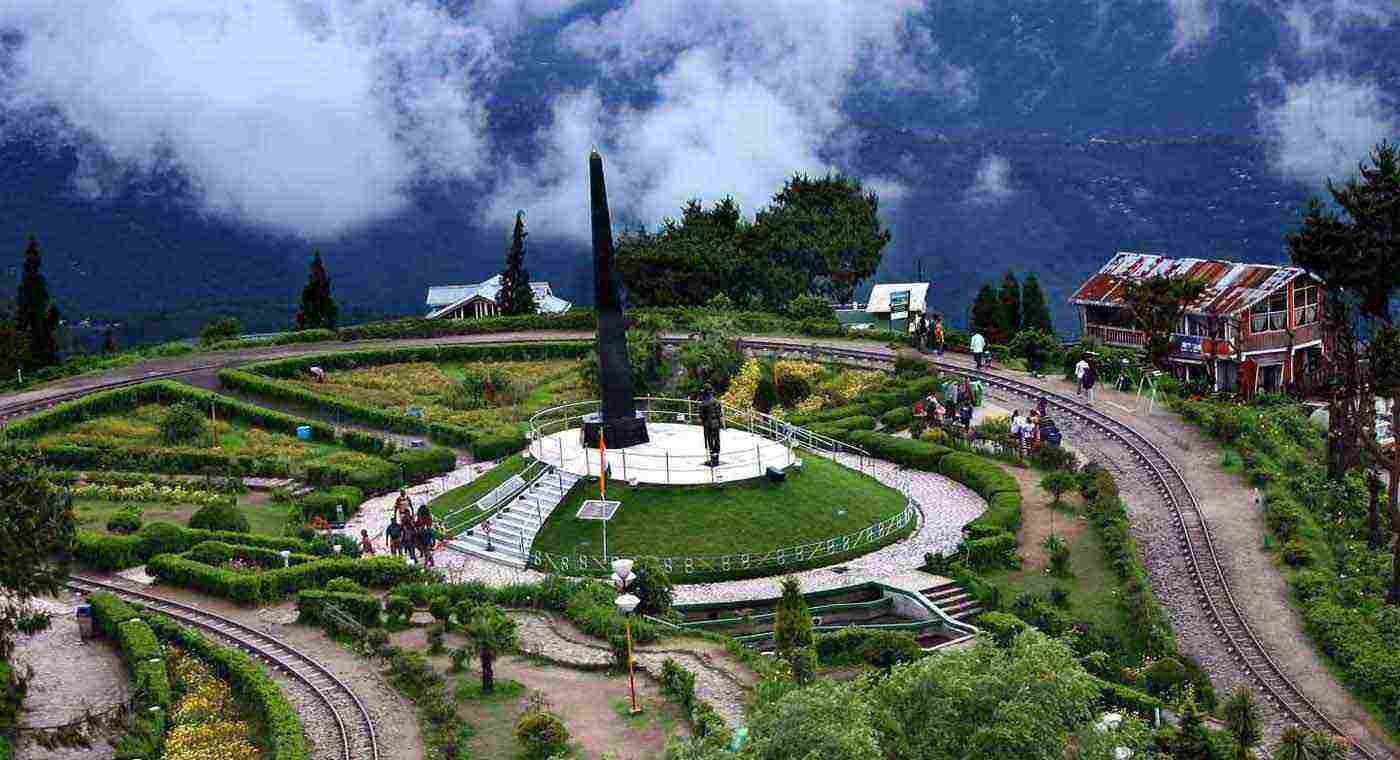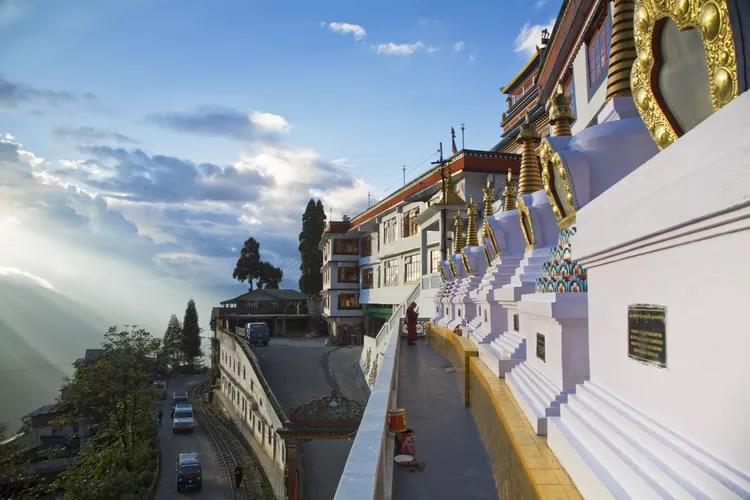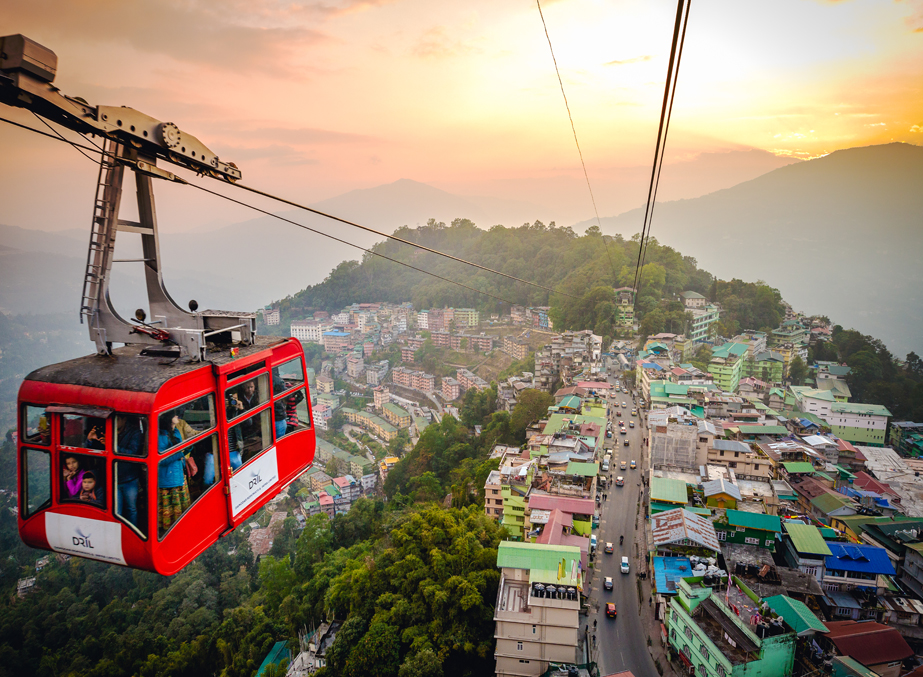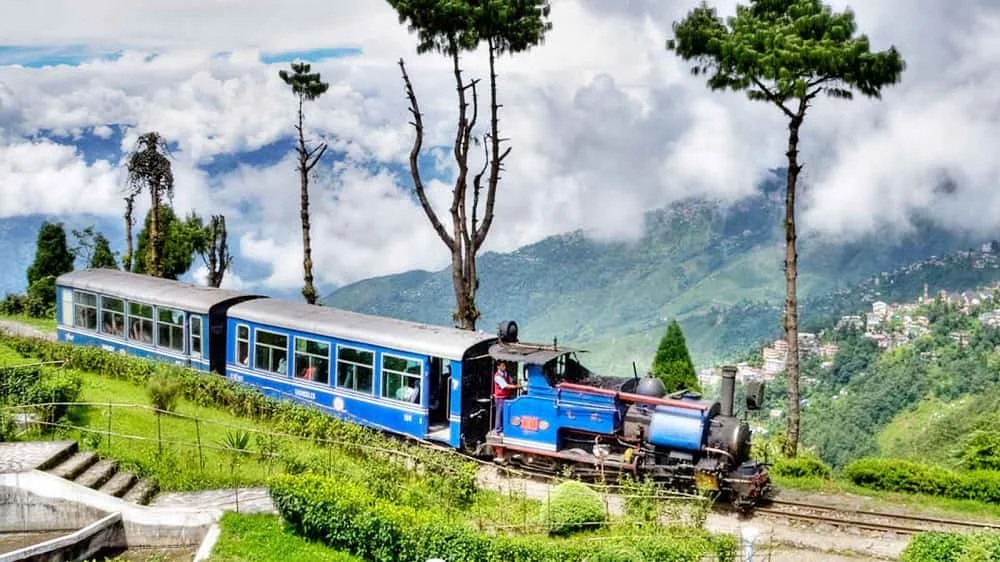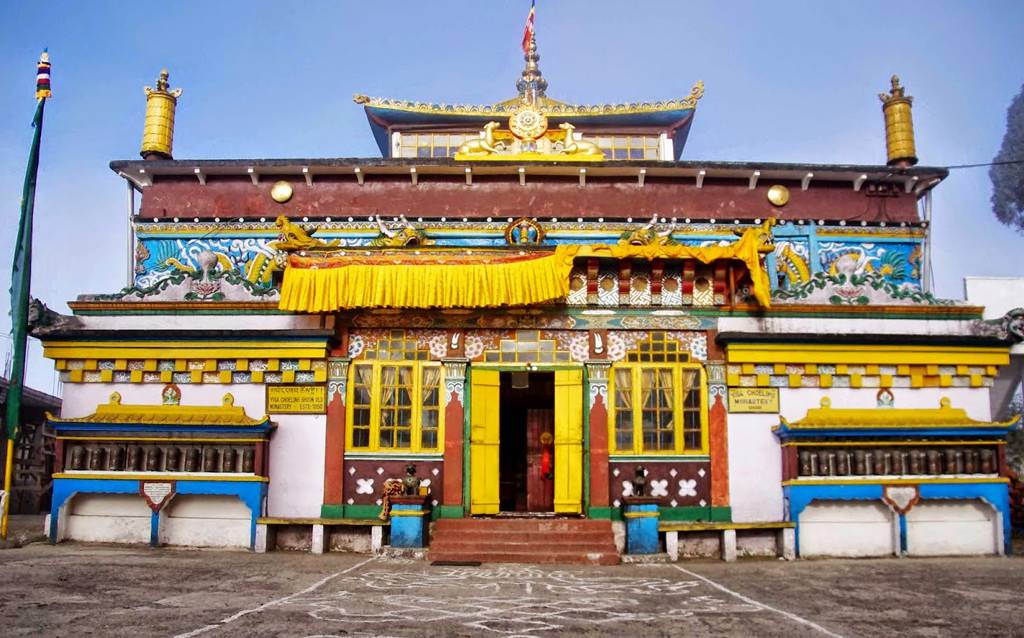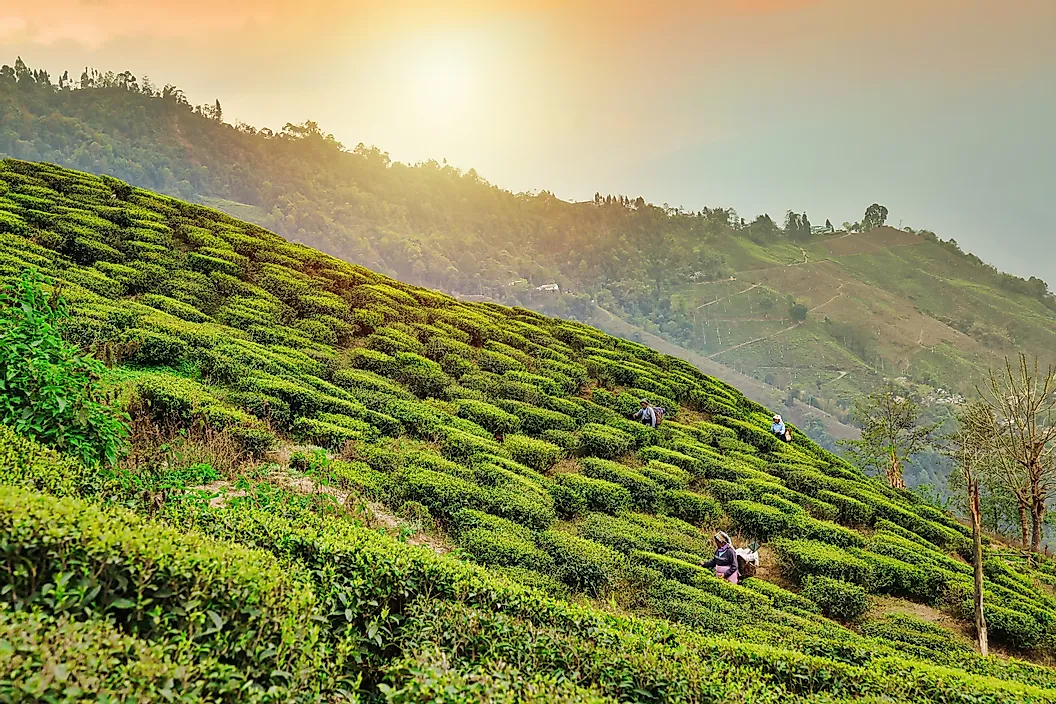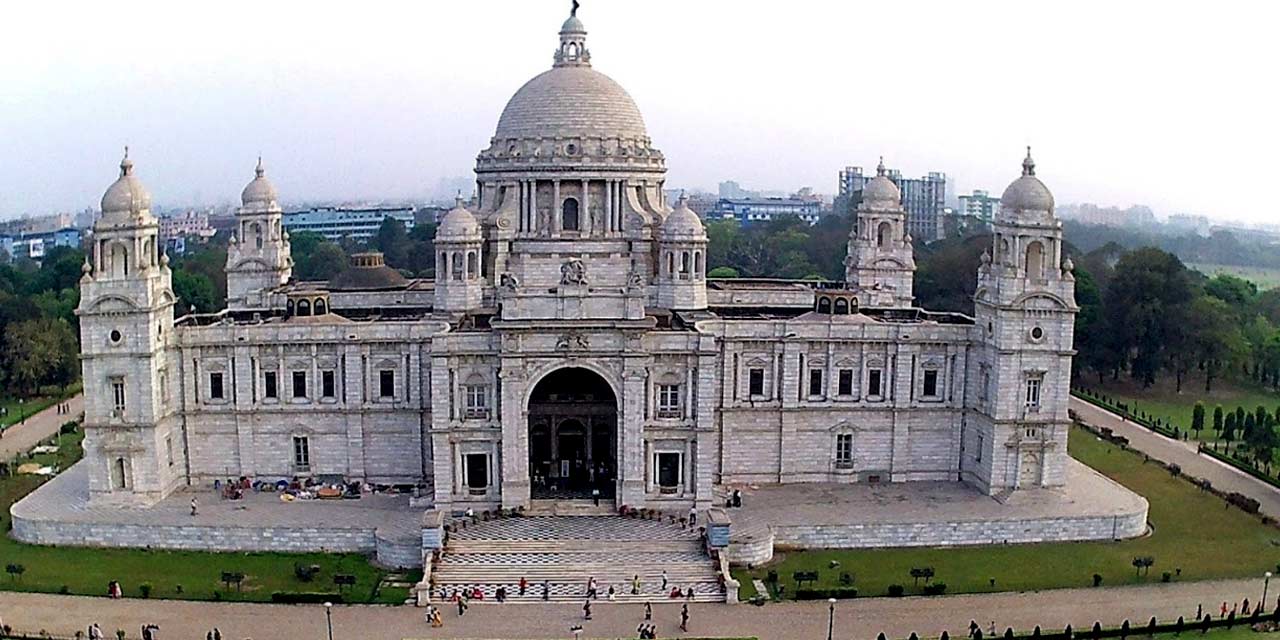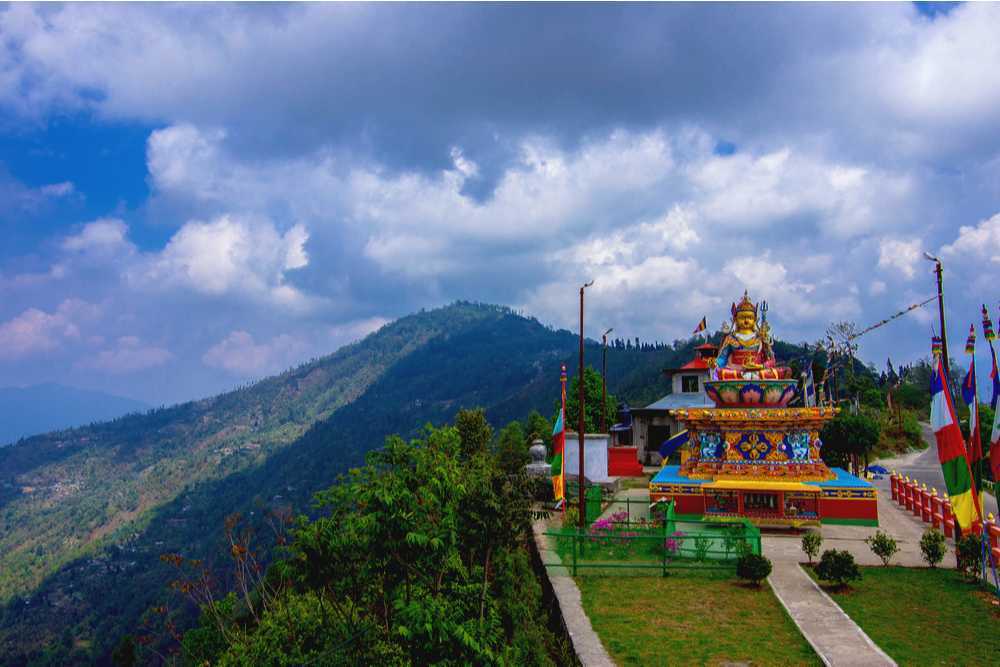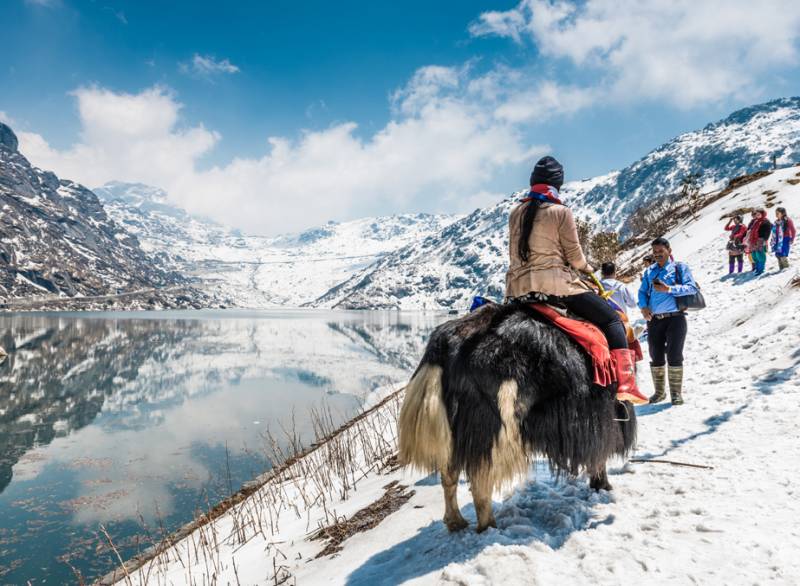- 4 NIGHTS / 5 DAYS
- States : DARJEELING
- Places Covered : Darjeeling , Gangtok , Changu Lake
- Note :
For NathuLa additional cost of Rs 4500/- will be charged per vehicle. (Closed on Monday) Regarding permit the documents required are Passport size photograph, ID proof (Voter Card / Driving License / Passport) Aadhar Card & PAN Card are not applicable.
Darjeeling Gangtok (4Nights and 5 Days)
On arrival at Bagdogra Airport our representative will greet you and you will proceed towards Darjeeling. Upon arrival check - in to the hotel and spend the first day of your trip at leisure. You can even explore the Mall road known as Chowrasta by yourself and buy some souvenirs. Overnight stay at Darjeeling.
The journey starts early in the morning at 04:00 to visit Tiger Hill to view the sunrise over Kanchenjunga Peak. Following this you will also visit Batasia Loop and Ghoom Monastery then proceed back to the Hotel. After breakfast you will proceed for another round of sightseeing covering major attractions like the Zoo, Himalayan Mountaineering Institute (closed on Thursday), Tibetan Refugee Centre (closed on Sunday), Tenzing Rock & Tea Garden. Overnight stay at Darjeeling.
Post your breakfast, you will proceed towards Gangtok. After reaching, you will start your city tour covering Tashi Viewpoint, Bakthang Waterfalls, Lhasa Waterfalls, Plant Conservatory, Organic View Point, Ganesh Tok & Gonjang Monastery. Overnight stay at Gangtok.
After breakfast you will proceed towards Changu Lake, considered as the sacred lake. Following this you will also visit Baba Harbajan Mandir. After this experience you will return to Gangtok. Overnight stay at Gangtok.
After breakfast you will proceed to Bagdogra Airport. It is now time to head back home with a plethora of good memories.
Darjeeling
Darjeeling is a town in India's West Bengal state, in the Himalayan foothills. Once a summer resort for the British Raj elite, it remains the terminus of the narrow-gauge Darjeeling Himalayan Railway, or “Toy Train,” completed in 1881. It's famed for the distinctive black tea grown on plantations that dot its surrounding slopes. Its backdrop is Mt. Kanchenjunga, among the world’s highest peaks.
Kanchenjunga Peak
Kangchenjunga, also spelled Kanchenjunga, Kanchenjunga and Khangchendzonga, is the third-highest mountain in the world.
Ghoom Monastery
It is one of the oldest and most popular Tibetan Buddhist monasteries in the region of Darjeeling and also one of the must visit places in Darjeeling. Yiga Choe ling Monastery was established in 1850 CE by the Mongolian astrologer and monk Sokpo Sherab Gyatso, who was the head of the monastery until 1905 CE.
Tenzing Rock
Tenzing and Gombu rocks are situated on Lebong Cart Road and face opposite to each other. The huge Tenzing rock is named after Tenzing Norgay, who was famous for climbing the Mount Everest accompanied by Edmund Hillary in the year 1953.
Gangtok
Gangtok is the capital of the mountainous northern Indian state of Sikkim. Established as a Buddhist pilgrimage site in the 1840s, the city became capital of an independent monarchy after British rule ended, but joined India in 1975. Today, it remains a Tibetan Buddhist center and a base for hikers organizing permits and transport for treks through Sikkim’s Himalayan Mountain ranges.
Bakthang Waterfalls
Bakthang Waterfall is not vertically imposing. However, its broad horizontal flow is what makes it extremely beautiful. Fed by the Ratey Chu (river) that originates at a staggering 12,500ft, this waterfall is the perfect pit stop whether you're travelling alone or with the family.
Lhasa Waterfalls
The waterfall is named after the Tibetan capital of Lhasa, and is said to be a sacred site by the local people. The waterfall is about 100 feet tall, and the water flows down a steep cliff face. The water is crystal clear, and the surrounding area is lush and green.
Changu Lake
It is known for its tranquil surroundings and peaceful ambience, making it an ideal place for meditation and spiritual contemplation. Tibetan style inspires the architecture of Gonjang Monastery, and the prayer hall houses a statue of Guru Rinpoche or Padmasambhava, the Indian sage who introduced Buddhism to Tibet.







 Ranked No.1 Domestic Tour
Operator by Ministry of Tourism
Ranked No.1 Domestic Tour
Operator by Ministry of Tourism